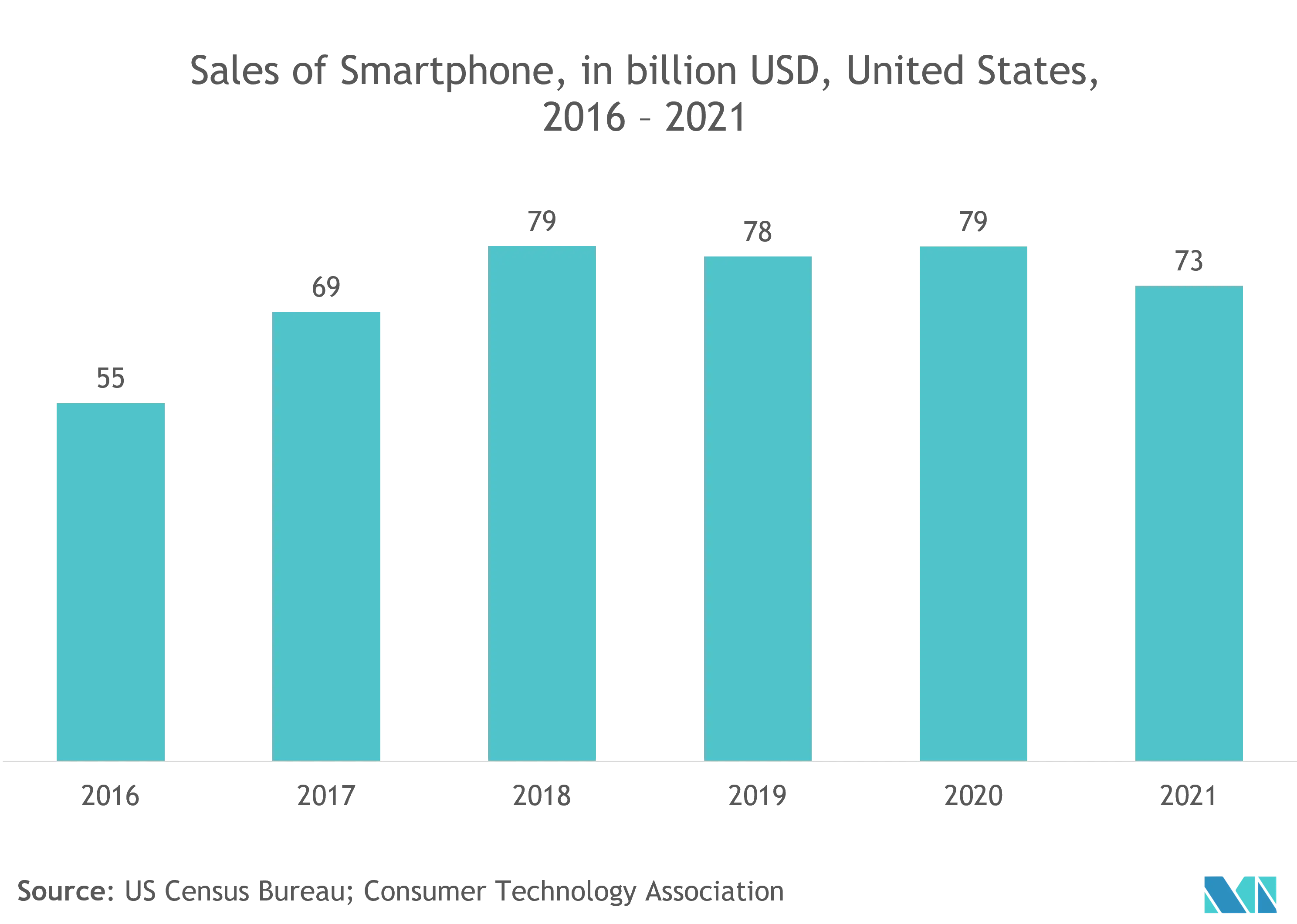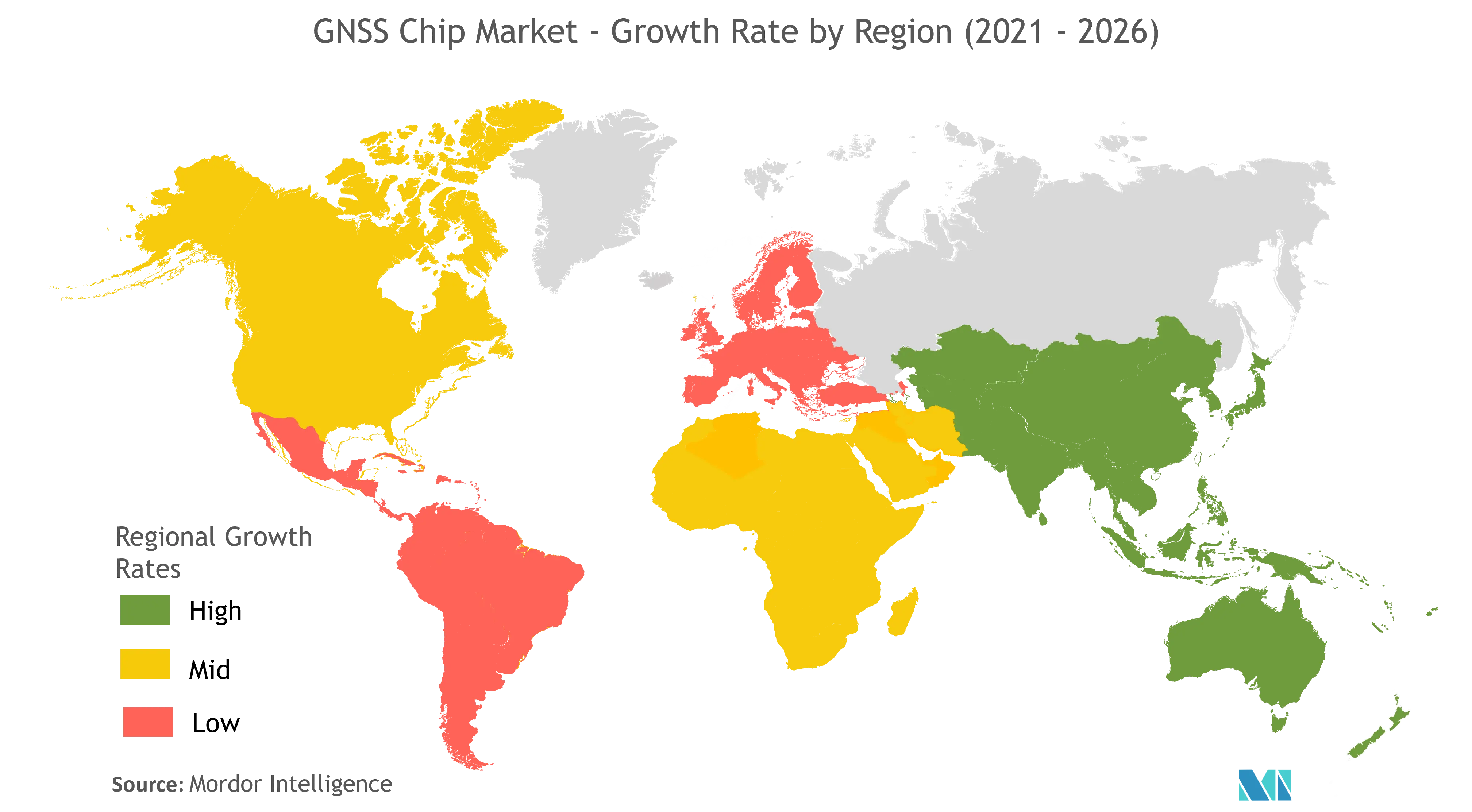Market Trends of Global Navigation Satellite System Chip Industry
This section covers the major market trends shaping the Navigation Satellite System Chip Market according to our research experts:
The Smartphones Segment is Expected to Hold a Significant Market Share
Despite considerable saturation of mature markets, such as EU28, North America, and China, the shipments of smartphones still outnumber devices using GNSS chips. Smartphones have been using GNSS chips for a considerable time. In most cases, these chips support all publicly available satellite networks, such as GPS, GLONASS, Galileo, etc. However, compared to dedicated navigation devices, these solutions were less accurate.
Additionally, a degree of monopoly in the smartphone hardware market limited the scope for GNSS chip installations. Most of the time, Qualcomm hardware does not include Broadcom GNNS chips and vice versa, as they are prime competitors. However, in recent years, this scenario has been changing.
The European Commission has approved a regulation mandating that new smartphones launched in the market will have to include satellite and Wi-Fi location services. According to the regulation, chipsets enabled with the global navigation satellite system (GNSS) capabilities are likely to have access to the EU’s satellite system Galileo, which provides accurate positioning and timing information. Eight EU countries have been following this regulation and are using Galileo-compatible chipsets.
According to the European GNSS Agency, over 95% of the satellite navigation chipset supply market supports Galileo in new products, including various manufacturers of smartphone chipsets like Broadcom, Qualcomm, and Mediatek. With leading GNSS chipset providers producing Galileo-ready chipsets and global smartphone brands already integrating these chipsets in their latest smartphone models, the market is expected to have further growth opportunities during the forecast period.
Further, the new generation of Android smartphones is equipped with high-performance global navigation satellite system (GNSS) chips capable of tracking dual-frequency multi-constellation data. Starting from Android version 9, users can disable the duty cycle power-saving option; thus, better quality pseudo-range and carrier phase raw data are available. Also, the application of the Precise Point Positioning (PPP) algorithm has become more enjoyable. This work aims to assess the PPP performance of the first dual-frequency GNSS smartphone produced by Xiaomi equipped with a Broadcom BCM47755. The advantage of acquiring dual-frequency data is highlighted by comparing the performance obtained by Xiaomi with that of a single-frequency smartphone, the Samsung S8. The vertical and horizontal accuracy achieved by Xiaomi is 0.51 m and 6 m, respectively, while those achieved by Samsung is 5.64 m for 15 m for horizontal and vertical.

Asia-Pacific is Expected to Account for a Significant Market Share
BeiDou, first launched in 2000 and operated by the China National Space Administration, is based in China (CNSA). BeiDou has 48 satellites in orbit after 20 years. B1I (1561.098 MHz), B1C (1575.42 MHz), B2a (1175.42 MHz), B2I and B2b (1207.14 MHz), and B3I are among the signals being transmitted by BeiDou satellites (1268.52 MHz).
China's attitude to GNSS differs from that of Europe. While there are 11 widely acknowledged GNSS-enabled technical groupings in Europe, ranging from consumer products to vital infrastructure, the situation in China is far more complicated. There were three broad sectors - industrial market, mass consumer market, and specific market.
On March 11, 2021, China rolled out its 14th five-year plan. It is a plan that touches on all aspects of development over the next five years and presents China's 2035 vision. The 14th Five-Year Plan's persistent emphasis on R&D and innovation substantially impacts China's GNSS industry. "Deepen the promotion and use of BeiDou systems; Promote the industry's high-quality growth" is advocated as a policy guideline in the plan as an important national strategic project. The strategy is expected to signify a boost in the GNSS industry's research and development, promote BeiDou's industrial application and accelerate significant core technology advancements.
Further, the Korean Committee of Space Technology hopes to build a ground test by 2021, fundamental satellite navigation technology by 2022, and actual satellite manufacturing by 2024, according to the Korean Committee of Space Technology. Three satellites will be put in the geostationary orbit above the Korean Peninsula, making the KPS a seven-satellite constellation.
In February 2021, the Ministry of Science and ICT announced a budget of KRW 615 billion (USD 553.1 million) for space activities to increase the country's capacity to create satellites, rockets, and other critical equipment.

